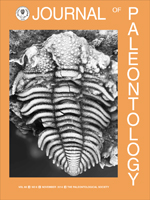The gastropod fauna of the Lower Cretaceous of the Argentinian Neuquén Basin contains three aporrhaid species. Protohemichenopus neuquensis Camacho, 1953 is the most abundant, longest-lived, and most geographically widespread of the aporrhaids of this basin, and its protoconch and early teleoconch whorls were unknown until now. The new species Dimorphosoma weaveri features convex to subtly angular spire whorls with opisthocyrt collabral ribs that are more prominent towards the mid-whorl, a bicarinate last whorl with small rounded nodes on the adapical carina, a simple, falcate labral wing which is more or less rectangular proximally and tapering and curving towards its distal end, and a short, straight rostrum. Tylostoma jaworskii Weaver, 1931 is now placed in Harpagodes, and other previous, scattered, coeval records of this genus in the basin are now recognized as part of this single species. It is believed that whereas H. jaworskii preferred shallower-water carbonate settings of low to moderate energy, P. neuquensis and D. weaveri favored siliciclastic to mixed clastic-carbonate environments, in deeper waters. In spite of its endemic elements, this aporrhaid association depicts a predominantly Tethyan influence.
How to translate text using browser tools
1 November 2014
The gastropod family Aporrhaidae in the Lower Cretaceous of the Neuquén Basin, west-central Argentina
Cecilia S. Cataldo
ACCESS THE FULL ARTICLE

Journal of Paleontology
Vol. 88 • No. 6
November 2014
Vol. 88 • No. 6
November 2014




